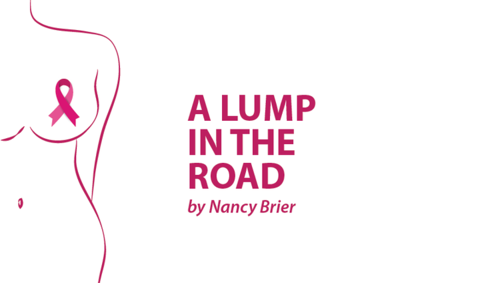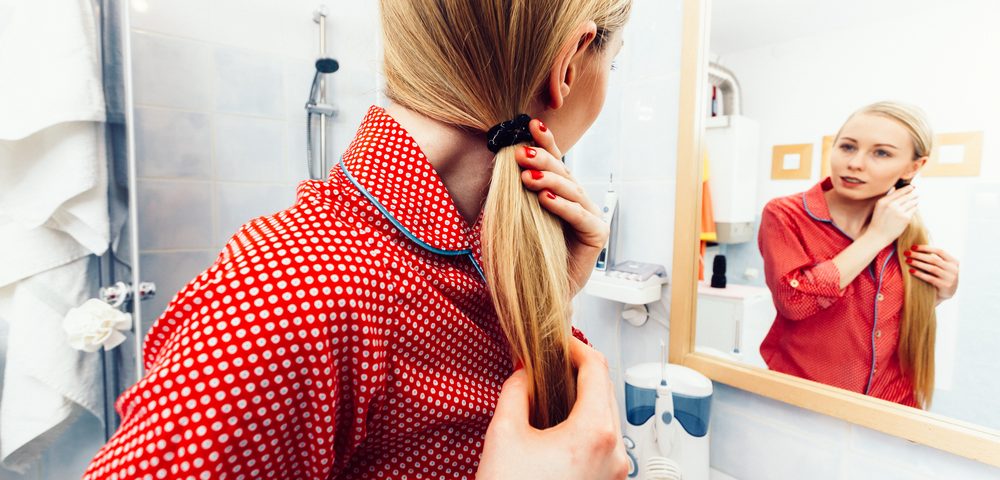
The morning of my first chemo session, four blue coolers with hinged white lids, built-in retractable handles, and giant black tires on the hand truck carrying them lined the walls of my room at Stanford Hospital.
Inside each cooler, 50 pounds of dry ice were layered between four frozen, helmet-shaped caps covered with Velcro straps. Sixteen caps, 200 pounds of dry ice, four coolers and one hand truck. All evidence of a pricey experiment designed to save my hair.
“You’ll feel better if you don’t go bald,” Gary had told me a few days earlier, when he learned about this crazy gamble. I have to admit that other than dying, the thought of losing my hair was always on my mind. I had a hard time even bringing it up, because it seemed so silly and superficial. But my husband had scoped out my secret hair angst, and come up with a possible solution — if I wanted it.
After my diagnosis, while I slept, Gary spent nights researching triple negative breast cancer, including the strain I have. Along the way he came across a site that promised no hair loss from the rigors of chemo.
It turns out that a lot of countries outside the United States, where there is no FDA interference, have sophisticated machines to help cancer patients keep their hair. They consist of portable refrigeration units attached to hoses, that attach to spaceman-type helmets, that attach to chemo patients’ heads. Think early NASA astronauts as they were transported to the launch pad with portable oxygen units and giant headgear.
“Look!” Gary exclaimed one morning as I stumbled into our home office with my first cup of tea. He pointed out one woman after another, all with their hair intact during final rounds of chemo. “Let’s try it!”
I scanned the site. The process involves freezing the patient’s head before, during, and after chemo. Its premise is that blood won’t circulate where it’s frozen, so meds won’t make it to the scalp, which in turn saves the hair. Genius.
“Who has this machine?” I asked. This is where things started getting weird. “Well,” my husband grimaced, “they’re actually not available in the U.S. — but these are.” He’d baited me with the cool George Jetson version, but switched me to a Fred Flintstone-meets-MacGyver version.
To make it work, we’d have to rent 16 of these pricey gel caps, buy four coolers and load them with dry ice the night before each chemo session. Caps and dry ice would have to be layered in a certain way so they’d freeze to minus 40. Yup, that’s negative four-oh.
During infusions, we’d have to keep a detailed log to ensure that the first caps could be refrozen in time to use later in the day. And to protect my forehead from frostbite, we’d use panty liners. Yes, panty liners. High tech it is not – not here in the U.S. anyway.
The caps stay on for seven excruciating hours. To make sure my head stayed good and frozen, we’d have to replace each cap every 20 minutes with a fresh one. Did I mention they’re expensive, rented by the month?
Gary and I have been entrepreneurs for a long time, so risk and crazy ventures come easily to us. Besides, I was desperate to keep my hair, maybe because it was the only thing I felt I’d have control over during cancer.
We typed in our credit card information and waited for our caps to be shipped from Wisconsin. Meanwhile, Gary raced to assemble other items we’d need, none of which was available in our rural community. Our town has a population of 900, so there aren’t many dry-ice outlets. No insulated gloves or digital thermometers for sale either.
The day we left for my first round of chemo at Stanford, our caps had still not arrived, due to a glitch in the shipping. Undaunted, Gary tracked our boxes down and hired a friend to drive them the four hours to our hotel. Then, in the middle of the night, my determined husband met with a another guy who sold dry ice. Back at the hotel at 1 in the morning, my husband layered dry ice and caps inside coolers, slammed the car door shut and joined me in bed.
It would be an early start the next morning, the kick-off to a life-saving journey for me. What we didn’t know was that the following morning would bring my husband into the fray in an unexpected way, one that turned out to be a game changer for both of us.
Read more about it in next week’s column.
***
Note: Breast Cancer News is strictly a news and information website about the disease. It does not provide medical advice, diagnosis, or treatment. This content is not intended to be a substitute for professional medical advice, diagnosis, or treatment. Always seek the advice of your physician or other qualified health provider with any questions you may have regarding a medical condition. Never disregard professional medical advice or delay in seeking it because of something you have read on this website. The opinions expressed in this column are not those of Breast Cancer News, or its parent company, BioNews Services, and are intended to spark discussion about issues pertaining to breast cancer.

